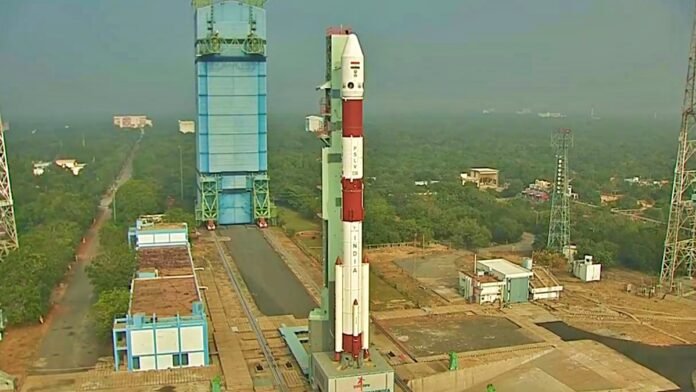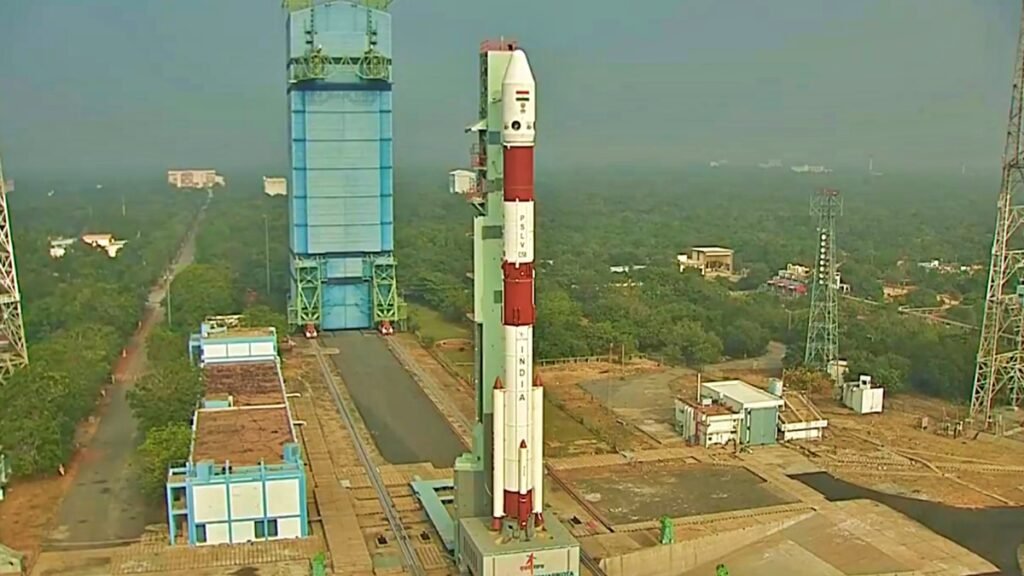
New Delhi: India has started the New Year 2024 with a bang by launching a mission to study one of the most mysterious phenomena in the universe: black holes. The mission, named XPoSat (X-ray Polarimeter Satellite), is aimed at measuring the polarization of X-rays emitted by various sources, including black holes, neutron stars, and pulsars. This will help scientists understand the extreme conditions and processes around these cosmic objects.
How was XPoSat launched?
XPoSat was launched on Monday, January 1, 2024, at 9.10 am from the Satish Dhawan Space Centre in Sriharikota, Andhra Pradesh. It was carried by the Polar Satellite Launch Vehicle (PSLV-C58), which is India’s most reliable and versatile rocket. This was the 60th mission of the PSLV, which has a record of launching multiple satellites in different orbits in a single flight.
The PSLV-C58 placed XPoSat in a circular orbit at an altitude of 650 km in just 21 minutes after liftoff. The satellite has a mass of 210 kg and a design life of five years. It is equipped with two solar panels and a high-gain antenna for power generation and communication.
What happened after the launch?
After deploying XPoSat, the PSLV-C58 performed an orbital maneuver to lower its altitude to 350 km. This was done using the fourth stage of the rocket, which is also known as the PS4. At this altitude, the PS4 conducted an experimental test called the PSLV Orbital Experimental Module – 3 (POEM 3). This test involved the demonstration of some technologies and payloads for future missions.
The POEM 3 test was the third in a series of experiments conducted by the Indian Space Research Organisation (ISRO) to utilize the PS4 as a platform for scientific and technological experiments. The first POEM test was conducted in April 2018 with the PSLV-C41 rocket, and the second POEM test was conducted in April 2023 with the PSLV-C55 rocket.
How will XPoSat reveal the secrets of black holes?
XPoSat carries two instruments to measure the polarization of X-rays from various sources in the sky. Polarization is a property of electromagnetic waves that describes the direction of their oscillation. By measuring the polarization of X-rays, scientists can infer the physical characteristics and processes of the sources that emit them.
The first instrument on XPoSat is the Polarimeter Instrument in X-ray (POLIX), which has been developed by the Raman Research Institute in Bengaluru. POLIX can measure the polarization of X-rays in the energy range of 5 to 30 keV. It can detect X-rays from sources that are bright and variable, such as black holes, neutron stars, and pulsars.
The second instrument on XPoSat is the X-ray Spectroscopy and Timing (XSPECT) instrument, which has been developed by the UR Rao Satellite Centre in Bengaluru. XSPECT can measure the spectrum and timing of X-rays in the energy range of 2 to 10 keV. It can detect X-rays from sources that are faint and steady, such as galaxy clusters, supernova remnants, and active galactic nuclei.
By combining the data from both instruments, XPoSat will provide a comprehensive picture of the X-ray sources in the sky. It will help scientists unravel the mysteries of black holes, such as their formation, evolution, and interaction with their surroundings. XPoSat will also contribute to the fields of astrophysics, cosmology, and fundamental physics.

Today is a very special day for India, as it has once again made history in space by launching XPoSat, the first Indian mission dedicated to studying black holes. XPoSat will join the elite club of X-ray observatories in orbit, such as NASA’s Chandra and ESA’s XMM-Newton, and will provide new insights into the fascinating and mysterious world of black holes.



















































